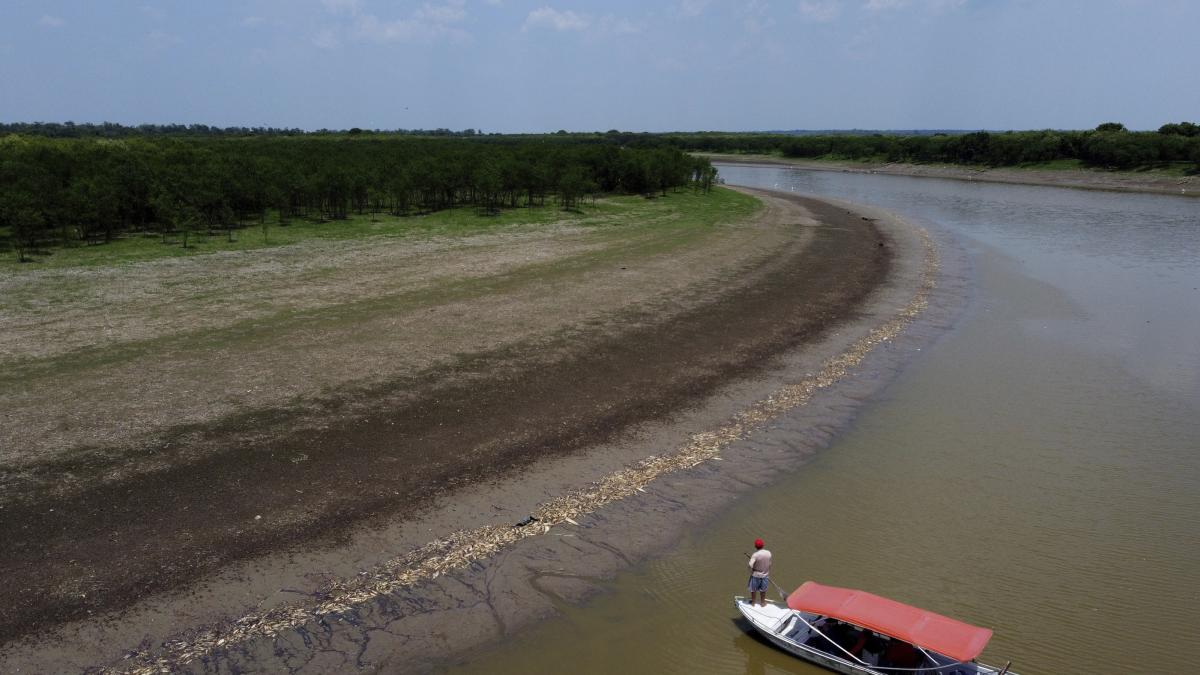Freshwater fish lived for millions of years in their rivers or lakes without mixing with those on other continents, until human movements changed their habitats and created one large transcontinental region, according to a study published this week.
According to the authors, this transformation, which accelerated in the mid-twentieth century, constitutes additional evidence of the entry of the Anthropocene, a new geological era characterized by the inclusion of the effects of human activities on Earth, which many scientists consider an attempt to make official as an academic name.
Until then, terrestrial biodiversity developed in areas separated by natural barriers such as seas, mountains, or climatic zones.
The “confinement” seemed most constant for freshwater fish, which could not spread across oceans and were part of a species of fauna unique to each continent.
Things began to change in the 19th century, with the first exchange of species between North America, Europe, and Australia.
Their spread accelerated in the middle of the twentieth century, “when they began to introduce… [especies] “Everywhere,” Boris Leroy, a biogeographer at the National Museum of Natural History in Paris (MNHM) and lead author of the study published in the journal Science Advances, explains to AFP.
These species have been introduced for health purposes (such as Gambusias into North American rivers to control mosquitoes) or for economic purposes, to develop aquaculture (such as African tilapia and silver carp, which originate respectively in Africa and Asia, and are among the most widely consumed farmed fish in the world). .
Another vector of entry is the aquarium trade, which spreads redfish and guppy populations around the world.
In total, 453 species were displaced from their natural areas, according to the study. Some have become invasive, with serious consequences for native species and the spread of diseases.
This is the case of the 12 cases that were “highly widespread” around the world.
As in the time of Pangea
The researchers worked with a database of more than 11,000 species spread across more than 3,000 watersheds.
A modern tool based on the compilation of thousands of studies, which allows us to see, in each region of the world, whether these species are native or introduced.
His team was able to compare natural areas with areas modified by human activities, using a “biosegmentation” algorithm.
“Four of the six natural biogeographic regions – North America, Europe, Asia and Oceania – have merged into one large region, which now represents a common species composition,” notes MNHM.
Leroy says this new geography of fish reflects trade exchanges between continents.
“We are artificially recreating the same species distribution conditions as those found on the supercontinent Pangea,” at the end of the Paleozoic era and the beginning of the Mesozoic era, says the researcher.
Fish can disperse within this single continental mass. Since its disintegration about 200 million years ago, “biodiversity has evolved in isolation, until the game-changing arrival of humans.”
According to the biologist, the study provides a “cartographic view” of the Anthropocene, “the time in which humans became a force for planetary change superior to natural geological forces.”
This new era, which has been debated within the scientific community, marks the beginning of the Holocene Era in the mid-20th century (which began 12,000 years ago).
The study indicates that, starting in 1947 specifically, there was a huge explosion in international trade in freshwater fish. “Today we are not seeing a slowdown in applications, we are seeing an acceleration,” Leroy stresses with concern.
He adds that introduced species, transplanted into their natural habitat, “will now not only produce fossils common to different regions of the world, but will also create new clines that change the evolutionary path of biodiversity.”
For generations to come, these fossils will serve as evidence of the passage into the Anthropocene.

“Proud web fanatic. Subtly charming twitter geek. Reader. Internet trailblazer. Music buff.”

:quality(85)/cloudfront-us-east-1.images.arcpublishing.com/infobae/TEQF6EONZRFGLLLDIDD4L2O4EE.jpg)

:quality(75)/cloudfront-us-east-1.images.arcpublishing.com/elcomercio/XU32LRAEZFDDPNVHLFU3CKVBYY.jpg)



More Stories
How to create 3D videos with my iPhone, it will be very useful even for your business
NASA discovers an anomaly in the Earth’s magnetic field that could have serious consequences for humans
Can the Earth be divided into two parts?